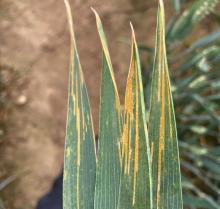
2
Yellow rust is an important economic disease of wheat. Often occurring more in the east of the UK and areas with mild winters and cool, damp summer weather.
A good selection of resistant varieties…

IWM involves using numerous weed control methods to try and manage a weed problem sustainably.
Whilst herbicides can still be used as part of an IWM approach, a major aim is to reduce reliance on…

Herbicides are substances (usually chemical) used to control weeds in a variety of situations including agriculture, horticulture and managed landscapes.
Herbicides are classified according to their…
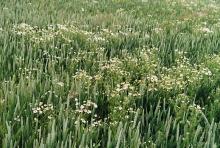
Broad-leaved weeds are a varied group of weeds that can grow and cause significant problems in arable fields in the UK.
Some of the most common broad-leaved weeds in the UK include: Common Chickweed…
Grass weeds are a major challenge in UK agriculture and are often highly competitive in arable crops.
Some of the most common grass weeds in the UK include: Black-grass (Alopecurus myosuroides),…
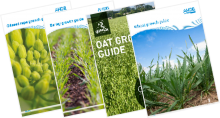
4
Farm-PEP aims to bring together all the sources of useful knowledge for Agriculture, whether from academic science, applied research projects, industry trials, farmers own trials or simple on-farm…

1
Policy plays a critical role in shaping the agriculture industry in the UK and Europe. Government policies can have a major impact on the way that farmers operate, the crops they grow, and the prices…
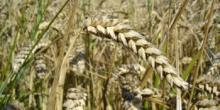
2
Sitobion avenae and Rhopalosiphum padi, otherwise known as the grain aphid and bird cherry-oat aphid, are the two main species of cereal aphids.
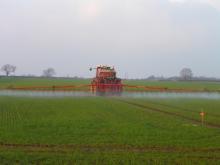
The herbicide glyphosate was first registered in 1974 under the original trade name RoundUp (Monsanto) and has since become one of the most commonly used herbicides globally.
It is a non-selective,…

1
Oilseed rape diseases can be caused by a variety of factors, including fungal, bacterial or viral infections, pests and insects, and environmental stress.




